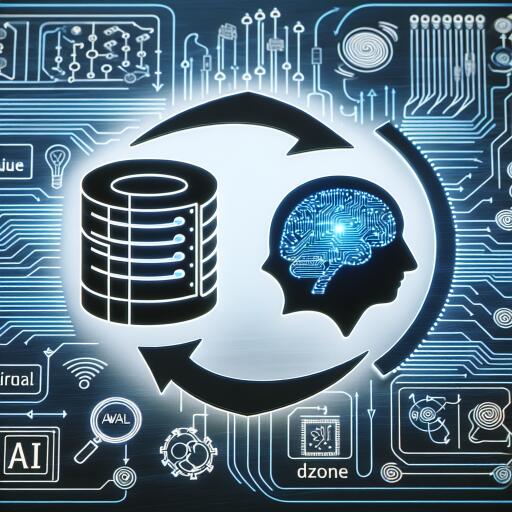Pivoting Database Systems Practices to AI
In the realm of database systems, the journey from traditional architectures to data-driven, AI-infused frameworks marks a pivotal transformation. The 2024 Trend Report by DZone, “Database Systems: Modernization for Data-Driven Architectures”, showcases the evolution of database practices empowered by artificial intelligence (AI). These enhancements span across performance, scalability, and flexibility while steadfastly ensuring data integrity and security.
From leveraging distributed and cloud databases for scalability to exploring NoSQL for handling unstructured data, and employing data lakes for deep analytics—modern practices have set the stage. Yet, the introduction of AI is set to redefine the course of database development and maintenance. AI brings the promise of automation, efficiency enhancement, and bolstered system robustness, charting the course for a revolutionary shift in how we approach database systems.
The AI Revolution in Database Development and Maintenance
The integration of AI, particularly through generative AI (GenAI), is transforming the landscape of database development. GenAI’s role in automating essential tasks such as schema design, query generation, and data cleaning heralds a new era of productivity and accuracy. Beyond task automation, AI’s capability to monitor system performance and recommend adjustments is turning the cumbersome process of database maintenance into a more streamlined and efficient operation.
Empowering Database Maintenance with GenAI
At the core of a database administrator’s responsibilities lie efficiency and security. Here, GenAI steps in as a formidable ally, particularly through Retrieval Augmented Generation (RAG). RAG, with its ability to draw upon best practices and generate tailored recommendations, enhances both the efficiency and effectiveness in schema design, query optimization, and more. What sets RAG apart is its mechanism of interpreting user queries through vector embeddings and generating customized, context-aware recommendations.
Deciphering Vector vs. Non-Vector Databases
The distinction between vector and non-vector databases becomes crucial in the context of AI applications. Vector databases excel in managing high-dimensional data for similarity searches, whereas non-vector databases cater to transactional data across various formats. Choosing the right database type involves a careful evaluation of aspects such as data compatibility, scalability, and security, among others.
Market-leading vector databases like Milvus, Pinecone, and Weaviate offer specialized features to support efficient vector storage and retrieval, underlining the importance of selecting a database that aligns with specific performance requirements and ecosystem compatibilities.
Leveraging Vector Search in RAG
Vector search and retrieval in RAG highlight the transformative power of AI in database systems. By creating vector embeddings for diverse content types, AI enables a unified, searchable knowledge base. This approach not only enhances the precision of recommendations but also supports comprehensive decision-making processes, making it indispensable for database development and maintenance.
Introducing Large Language Model Operations (LLMOps)
LLMOps represents the frontier of AI-powered database development, balancing foundational and fine-tuned models with effective prompt management and model observability. These practices ensure the efficiency and reliability of AI applications, making them adaptable for domain-specific tasks. Particularly, the custom deployment of fine-tuned small language models stands out for balancing performance with resource usage, illustrating the nuanced application of AI in database systems.
The Asynchronous and Synchronous Dance of Data Observability
AI’s role extends to enhancing both synchronous and asynchronous observability in database development and maintenance. Real-time insights and historical data analysis powered by AI ensure robust performance and proactive maintenance, setting a new standard for database operations.
Conclusion
The integration of AI into database systems is not just an enhancement but a leap towards redefining efficiency, accuracy, and scalability. As database systems continue to evolve under the influence of AI technologies, the potential for automation and improved productivity becomes increasingly tangible. The benefits of such integration resonate through improved performance and reliability, positioning organizations to advance their industry standing through innovative database practices.
Embracing AI in database development and maintenance is not just about keeping pace with technological advancements but capitalizing on them to unlock new levels of performance and innovation.
For more insights into the integration of AI in database systems and to explore further advancements in this field, stay tuned to future articles.










